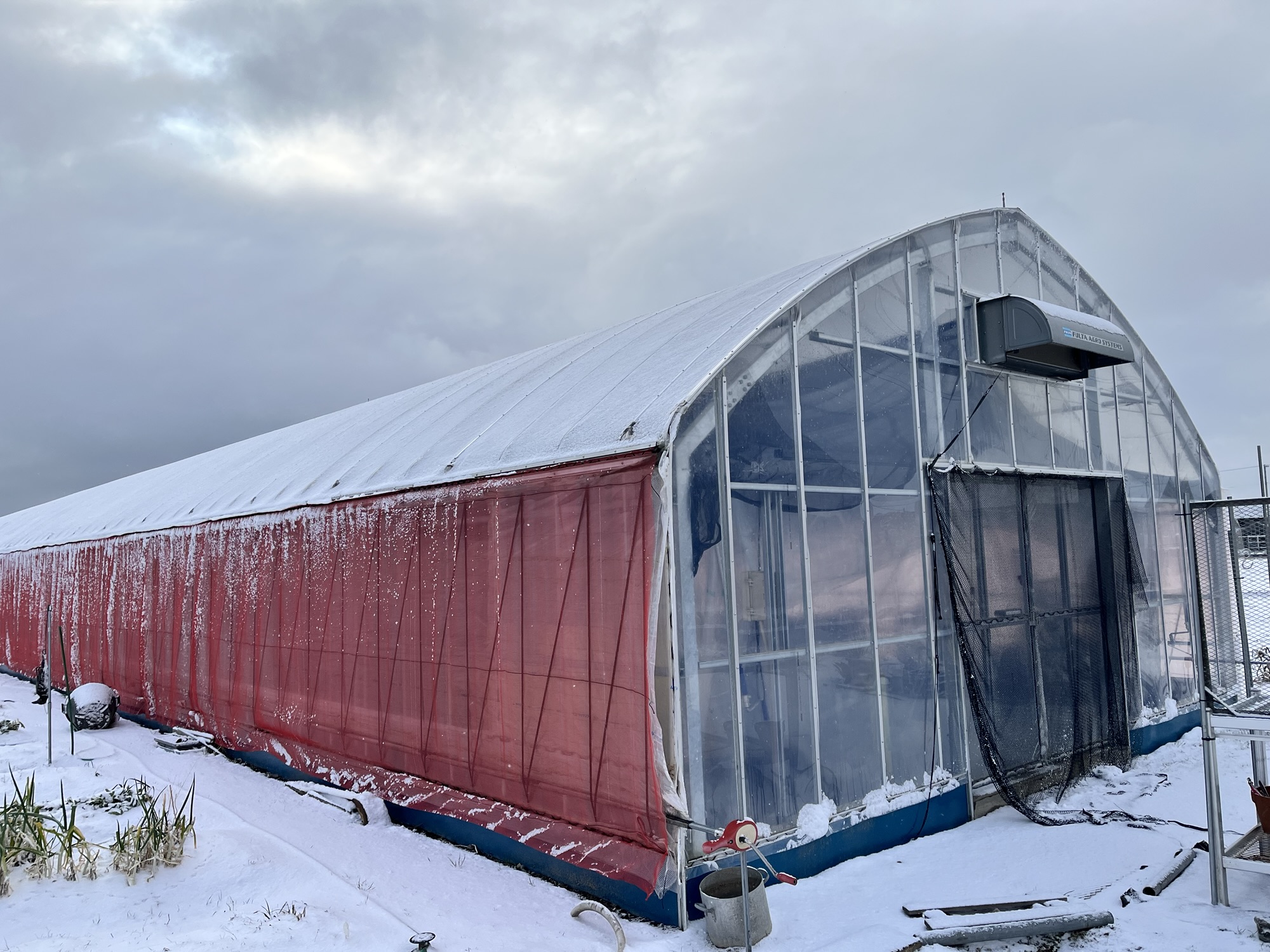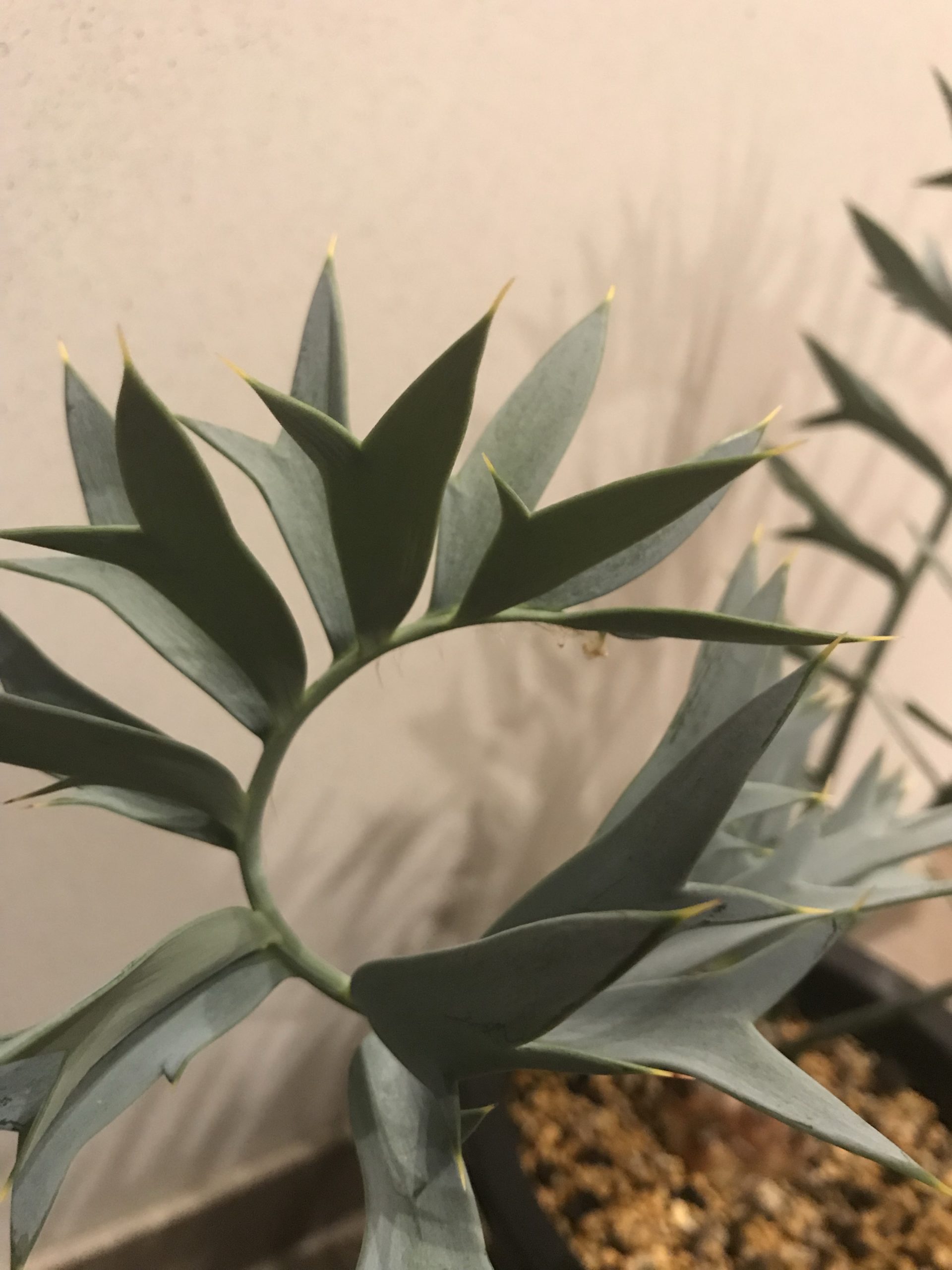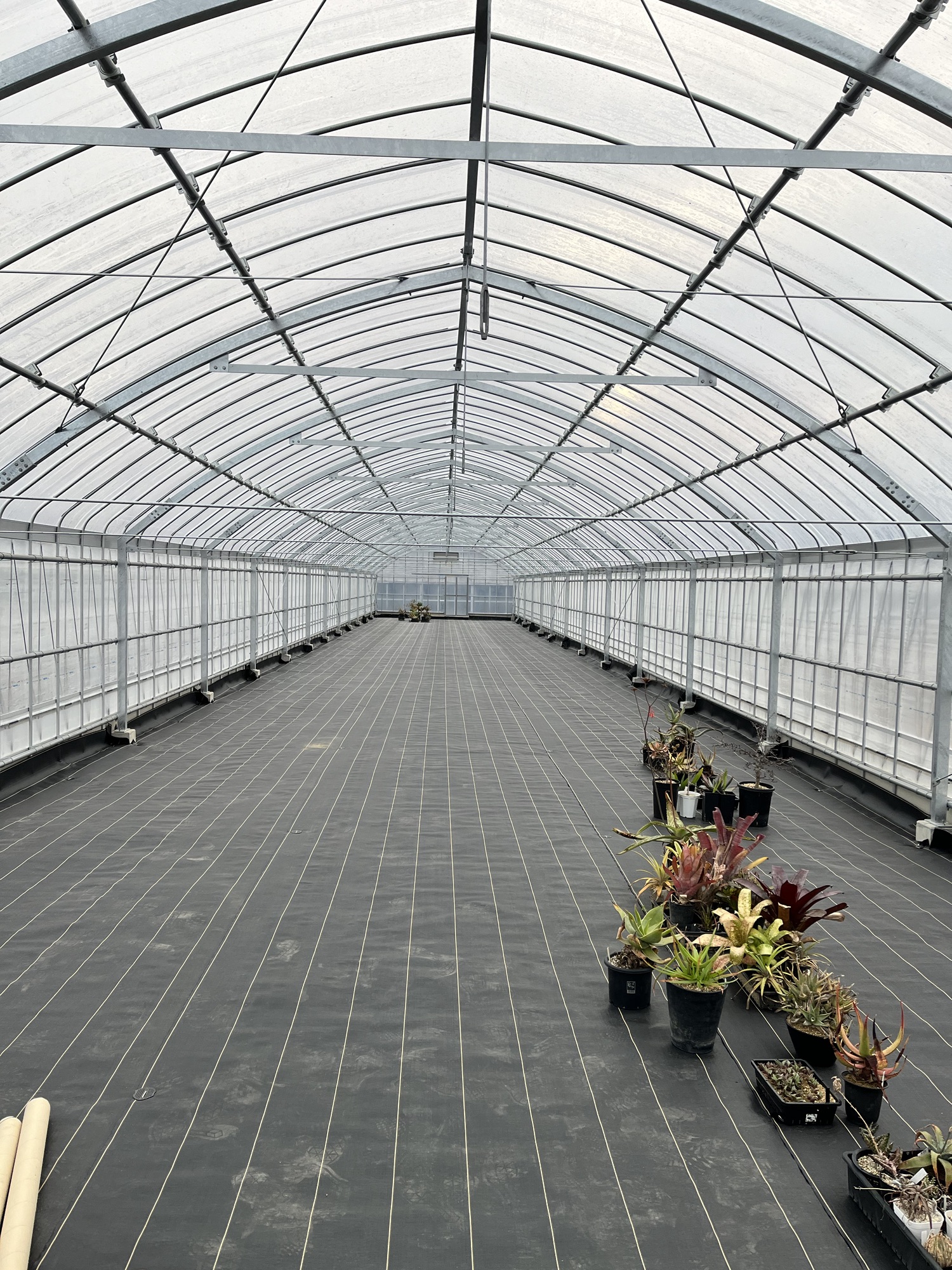多肉植物や塊根植物の栽培において、ビニールハウスを利用する趣味家が増えています。ここでは、趣味家が使うビニールハウスを前提に、そのベネフィットとリスクについて考えてみました。
ビニールハウス栽培のベネフィット

1. 気候のコントロール
多肉植物や塊根植物は乾燥地帯が原産で、特定の気候条件が必要です。ビニールハウスを使用することで、以下のような利点があります。
- 温度管理: ビニールハウス内では、外部の気温に左右されずに適切な温度を保つことができます。特に冬季には霜や低温から植物を保護し、安定した環境を提供します。
- 湿度管理: 多肉植物や塊根植物は過湿に弱いものが多いですが、ビニールハウス内では湿度をコントロールしやすく、適切な乾燥状態を維持できます。
2. 光の調整
ビニールハウスは光の量を調整しやすいため、多肉植物や塊根植物の健康的な成長を促進できます。
- 遮光ネットの利用: 強い直射日光を避けるために遮光ネットを使用することで、植物に適した光環境を作り出せます。
- 成長促進: 適切な光量を確保することで、植物の光合成を効率よく行わせ、健康的な成長を促します。
3. 病害虫の管理
ビニールハウスは外部からの病害虫の侵入を防ぎやすく、病害虫管理が容易になります。
- 物理的なバリア: ビニールハウスは物理的に病害虫の侵入を防ぐバリアとして機能します。これにより、農薬の使用量を減らし、環境に優しい栽培が可能になります。
- 定期的な監視: ビニールハウス内で定期的に病害虫の発生を監視し、早期に対策を講じることができます。
4. 成長期間の延長
ビニールハウスを利用することで、多肉植物や塊根植物の成長期間を延長することができます。
- 早春からの栽培: 外部の環境に左右されずに早春から育成し始めることができ、成長期間を長くすることができます。
- 冬季の保護: 冬季にも栽培を続けることができるため、一年を通じて植物の成長を見守ることができます。
5. 保護機能
ビニールハウスは、外部環境からの保護機能を提供します。
- 風雨の防止: 強風や激しい雨から植物を守ることができ、植物のダメージを減らすことができます。
- 動物の侵入防止: 野生動物や鳥による食害から植物を守ることができます。
ビニールハウス栽培のリスク

1. 初期投資の高さ
ビニールハウスの設置には初期投資が必要です。趣味家向けのビニールハウスであっても、以下の費用がかかることを考慮する必要があります。
- 設置費用: ビニールハウス本体の費用に加え、規模によっては基礎工事や設置作業の費用も考慮する必要があります。
- 設備の導入費用: 温度・湿度管理装置の導入には追加の費用がかかります。
2. 維持管理の手間
ビニールハウスは設置後も維持管理が必要です。これには以下のような手間が含まれます。
- 設備のメンテナンス: 換気装置など更新とメンテナンスが必要です。
- ビニールの交換: ビニール素材は経年劣化するため、定期的に交換する必要があります。
3. 温度管理の難しさ
特に夏場はビニールハウス内の温度が上昇しすぎることがあります。
- 過熱のリスク: 温度が上昇しすぎると、多肉植物や塊根植物がダメージを受けるリスクがあります。適切な換気や冷却システムが必要です。
- 冷却対策: 遮光ネットや換気システムを利用して過熱を防ぐ対策が求められます。
4. 病害虫の急激な蔓延
ビニールハウス内で病害虫が発生すると、密閉された環境のため急速に蔓延する可能性があります。
- 迅速な対応が必要: 病害虫が発生した場合、迅速に対応しないと被害が拡大する可能性があります。
- 予防策の重要性: 定期的な監視と予防策の実施が必要です。特に、病害虫の予兆を見逃さないように注意が必要です。
まとめ
趣味家がビニールハウスを利用して多肉植物や塊根植物を栽培する際には、多くのベネフィットがありますが、同時にいくつかのリスクも伴います。気候のコントロールや光の調整、病害虫の管理、成長期間の延長、保護機能などの利点を享受するためには、初期投資や維持管理の手間、温度管理の難しさ、病害虫の急激な蔓延に対する対策が必要です。これらを理解し、適切な対応をすることで、ビニールハウス栽培の利点を最大限に活用し、健康で美しい多肉植物や塊根植物を育てることができるでしょう。
Benefits and Risks of Greenhouse Cultivation for Succulent and Caudiciform Plants
In growing succulent and caudiciform plants, more hobbyists are utilizing greenhouses. Here, we will take a detailed look at the benefits and risks of using greenhouses, assuming their use by hobbyists.
Benefits of Greenhouse Cultivation
1. Climate Control
Succulent and caudiciform plants originate from arid regions and require specific climate conditions. Using a greenhouse offers the following advantages:
- Temperature Control: Inside a greenhouse, you can maintain an appropriate temperature independent of external weather conditions. This is especially beneficial in winter, protecting plants from frost and low temperatures, and providing a stable environment.
- Humidity Control: Many succulents and caudiciforms are sensitive to overwatering. Greenhouses allow easier control of humidity, maintaining suitable dry conditions.
2. Light Adjustment
Greenhouses make it easier to regulate the amount of light, promoting healthy growth of succulent and caudiciform plants.
- Use of Shade Nets: To avoid intense direct sunlight, shade nets can be used to create an optimal light environment for the plants.
- Growth Promotion: Ensuring the right amount of light allows efficient photosynthesis, promoting healthy plant growth.
3. Pest and Disease Management
Greenhouses can prevent the intrusion of pests and diseases from outside, making management easier.
- Physical Barrier: A greenhouse acts as a physical barrier to pests and diseases, reducing the need for pesticides and enabling environmentally friendly cultivation.
- Regular Monitoring: Within a greenhouse, regular monitoring for pests and diseases is easier, allowing for early intervention.
4. Extended Growing Season
Using a greenhouse can extend the growing season for succulent and caudiciform plants.
- Cultivation from Early Spring: Without being influenced by external conditions, you can start cultivation from early spring, extending the growth period.
- Winter Protection: Cultivation can continue through winter, allowing you to observe plant growth year-round.
5. Protection Functions
Greenhouses provide protection from external environmental factors.
- Protection from Wind and Rain: They protect plants from strong winds and heavy rains, reducing damage.
- Protection from Animals: They safeguard plants from being eaten by wild animals or birds.
Risks of Greenhouse Cultivation
1. High Initial Investment
Setting up a greenhouse requires an initial investment. Even for hobbyists, the following costs need to be considered:
- Installation Costs: Besides the cost of the greenhouse itself, you must also consider the costs of foundation work and installation.
- Equipment Costs: Additional costs for installing temperature and humidity control devices.
2. Maintenance Efforts
Greenhouses require ongoing maintenance after installation. This includes the following tasks:
- Equipment Maintenance: Regular inspection and maintenance of climate control devices.
- Replacement of Plastic: The plastic material of the greenhouse deteriorates over time and needs regular replacement.
3. Difficulty in Temperature Management
Particularly in summer, the temperature inside a greenhouse can rise excessively.
- Risk of Overheating: Excessive heat can damage succulent and caudiciform plants. Proper ventilation and cooling systems are necessary.
- Cooling Measures: Using shade nets and ventilation systems to prevent overheating is required.
4. Rapid Spread of Pests and Diseases
If pests and diseases occur inside a greenhouse, they can spread rapidly due to the enclosed environment.
- Need for Quick Response: If pests or diseases are detected, quick action is required to prevent widespread damage.
- Importance of Preventive Measures: Regular monitoring and implementation of preventive measures are necessary, particularly to avoid missing early signs of pests and diseases.
Summary
When hobbyists use greenhouses to cultivate succulent and caudiciform plants, there are many benefits but also some risks. To enjoy the advantages of climate control, light adjustment, pest and disease management, extended growing season, and protection functions, it is essential to address the initial investment, maintenance efforts, difficulty in temperature management, and the rapid spread of pests and diseases. Understanding and appropriately responding to these factors will allow you to maximize the benefits of greenhouse cultivation and grow healthy and beautiful succulent and caudiciform plants.







